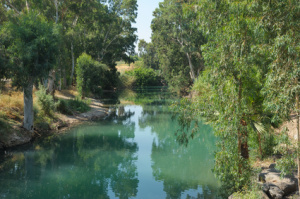
Can Desalination Help Save a Holy River?
Can Desalination Help Save a Holy River?
November 2, 2014
National Geographic — The Jordan River has supported a long succession of empires, but it took less than one generation of modern civilization to reduce the river to a trickle of sewage.
Now, the ultra-modern technology of “desalination” — turning ocean water into fresh water – may provide the best hope for bringing the river back to life.
At least that appeared to be the implicit consensus from the more than 400 Israeli and Jordanian water experts and interested stakeholders gathered in a kibbutz just downstream of the Sea of Galilee, in the Jordan River’s watershed.
 Israel has already built four desalination plants that provide more than 25% of the country’s freshwater supply, and has two more plants under construction.
Israel has already built four desalination plants that provide more than 25% of the country’s freshwater supply, and has two more plants under construction.
The additional water supply coming from desalination will hopefully enable the country to reduce its overdraft of groundwater aquifers, and maybe redirect some water back into the Jordan River.
In fact, the Israeli Water Authority recently committed to reallocating 9 million cubic miles (MCM) of water from the National Water Carrier to bolster flow in the Jordan River downstream of the Sea of Galilee beginning in 2013, with plans to increase that flow restoration to 20 MCM in the near future.
This recent commitment to return 20 MCM of water to the Jordan has given the river’s advocates new hope. But they know they have a very long way to go.
Prof. Alon Tal, of BGU’s Jacob Blaustein Institute for Desert Research, puts the cost of that water into perspective.
“Water presently costs Israelis about 60 cents per cubic meter. Producing 400 million cubic meters for the river would cost us about $240 million per year.”
“But think about it: one B2 bomber costs two billion dollars. For the cost of one bomber every 8 years we could bring the river back to life,” says Prof. Tal.



